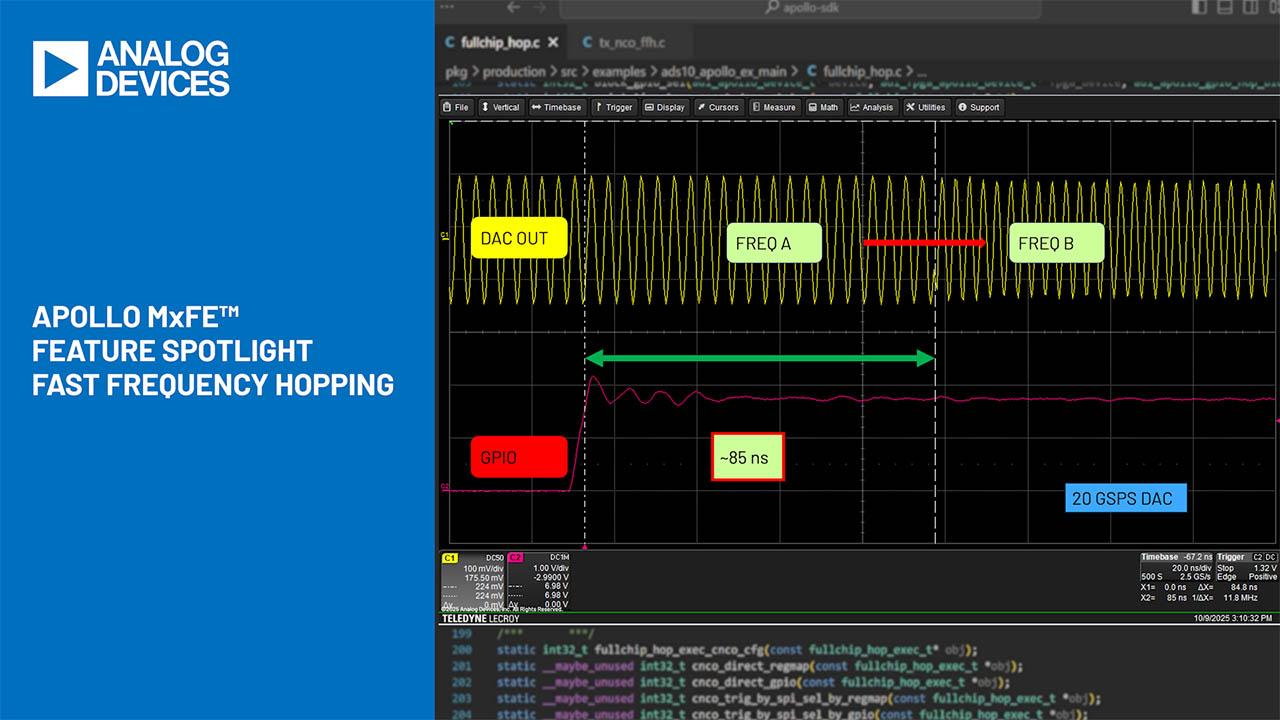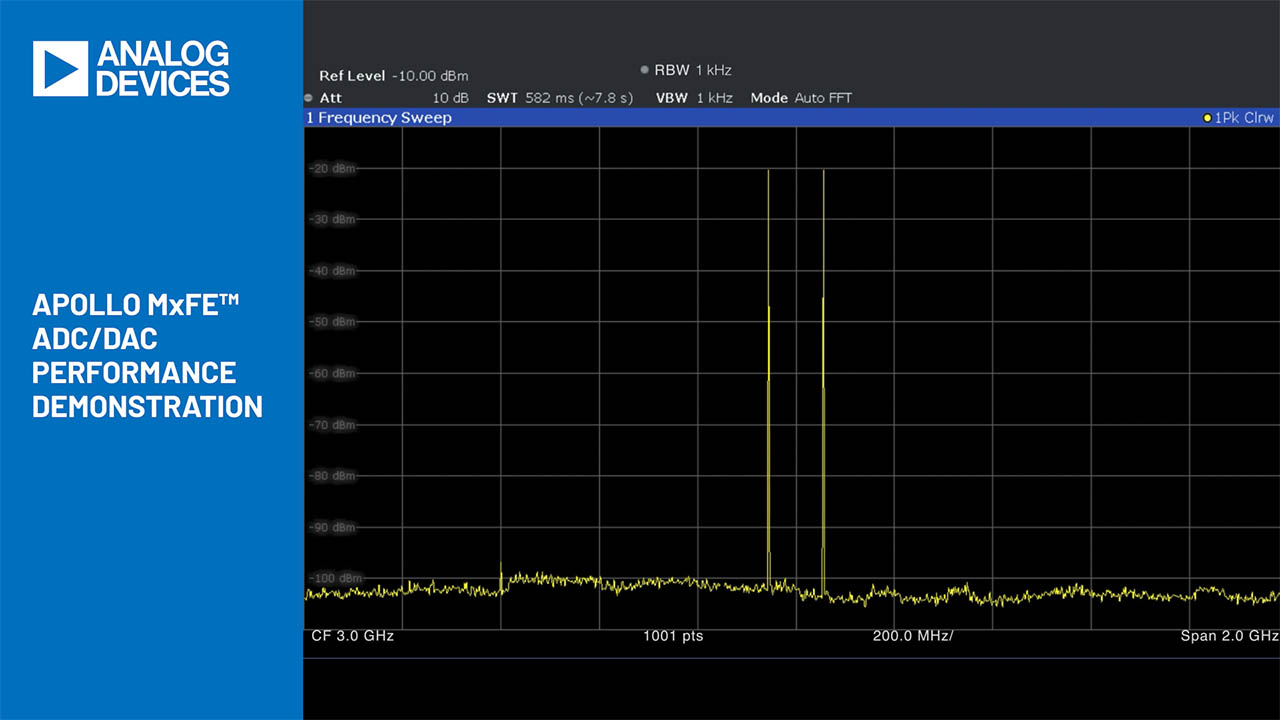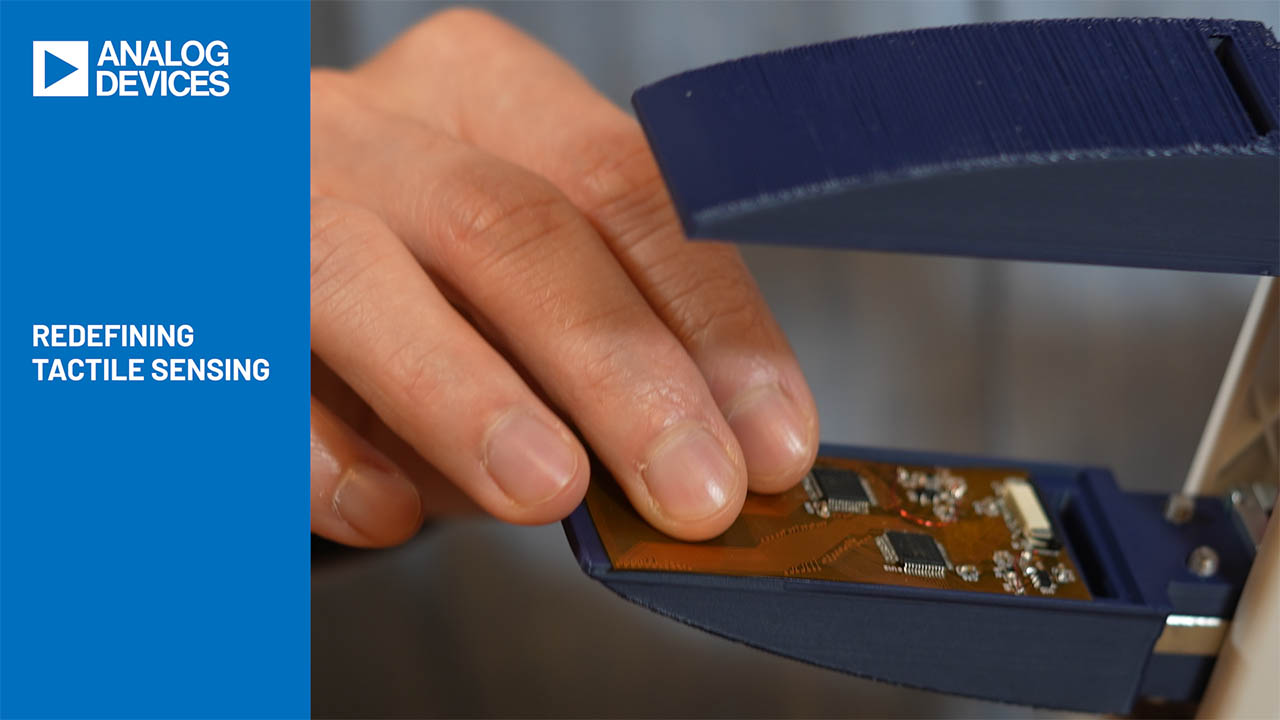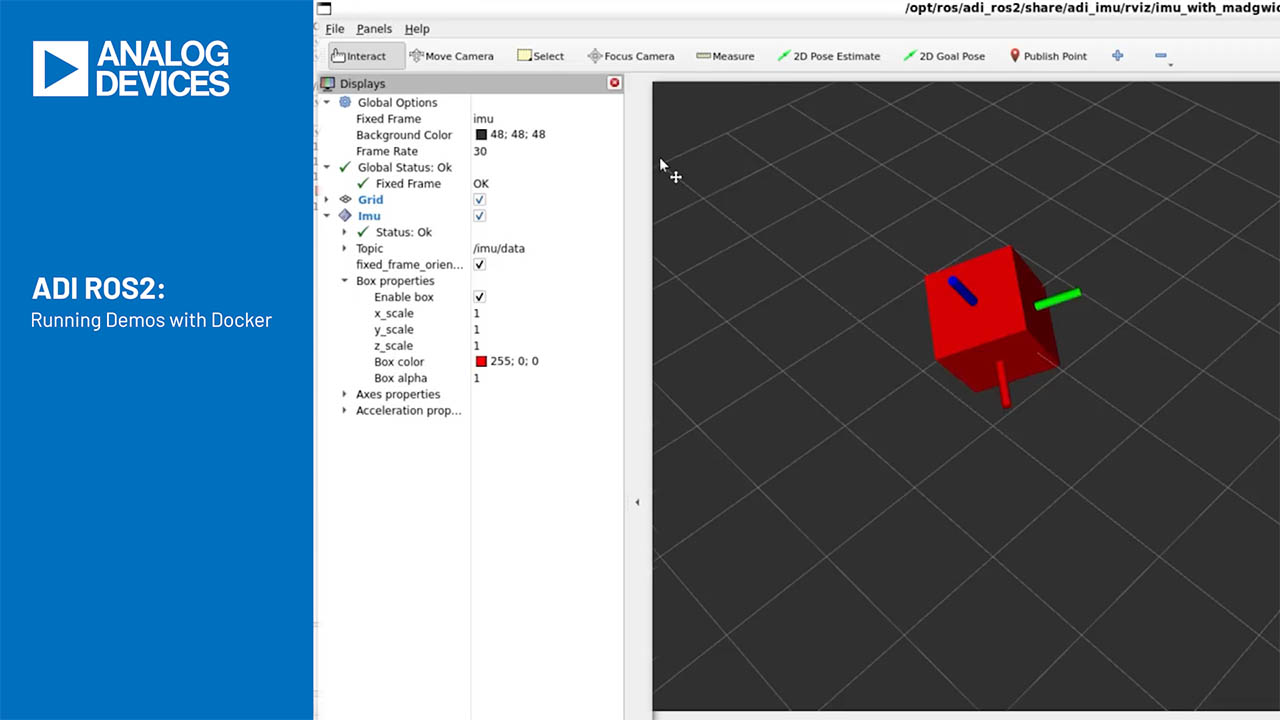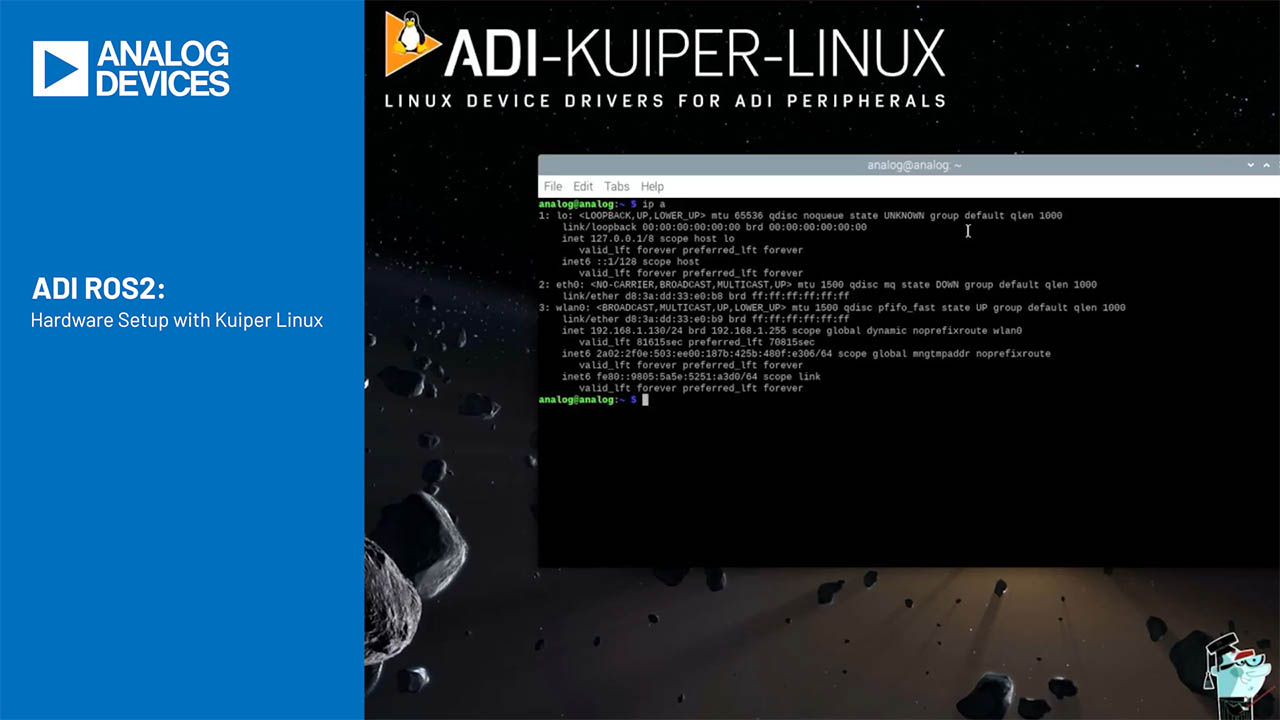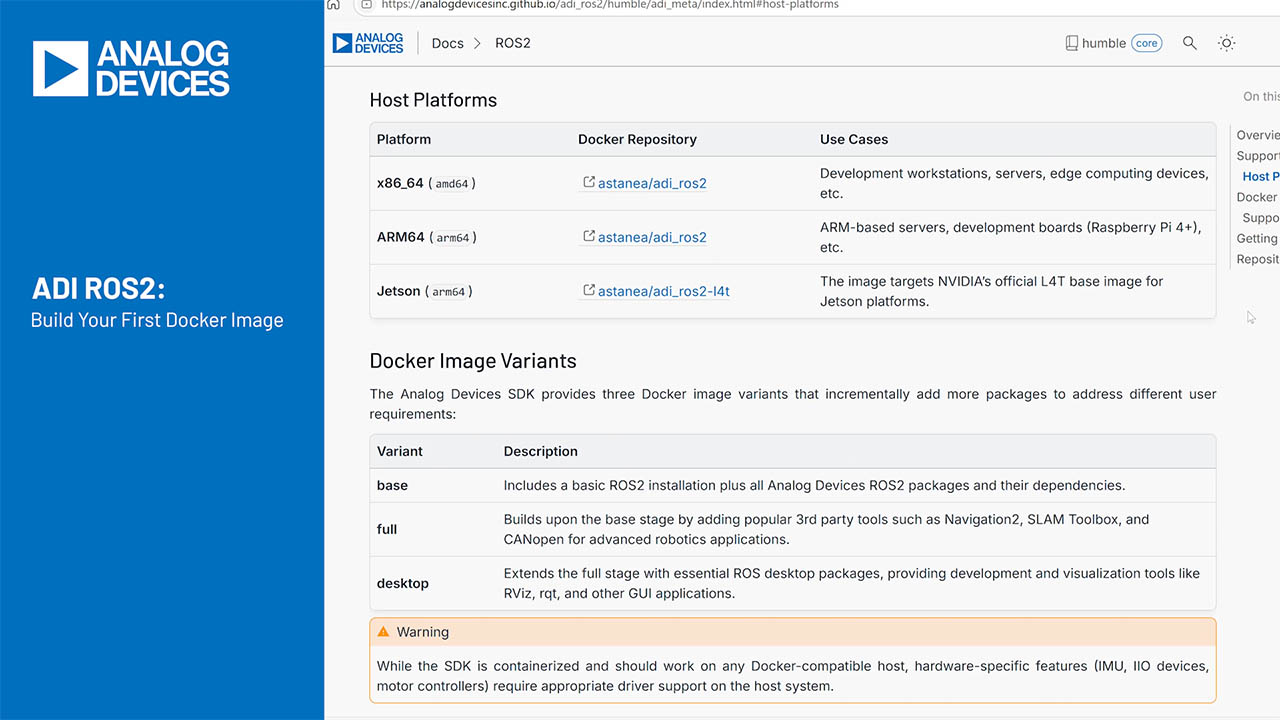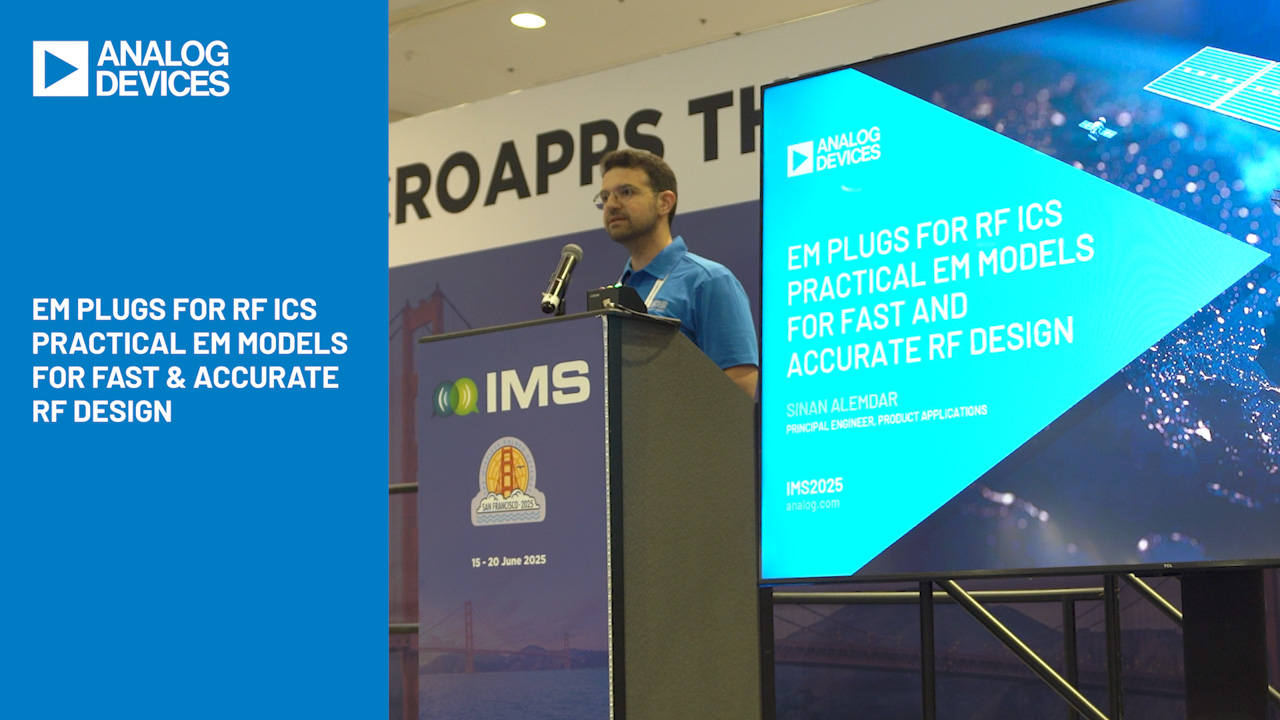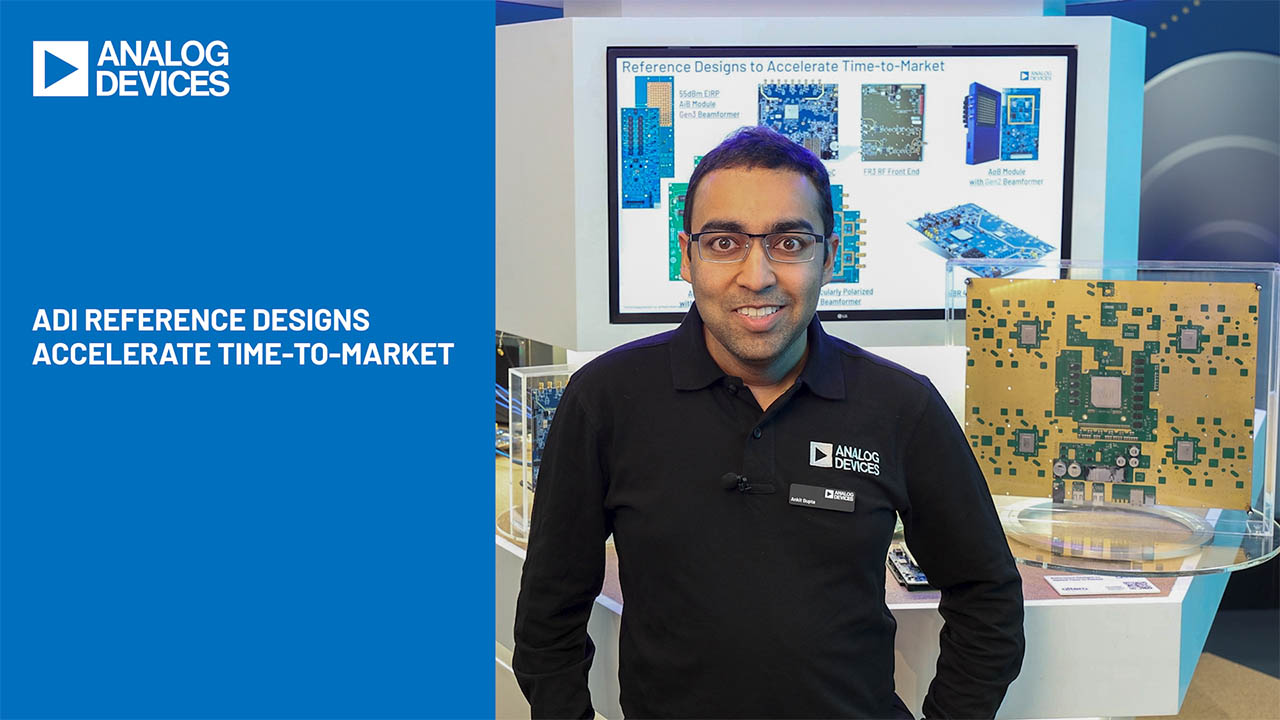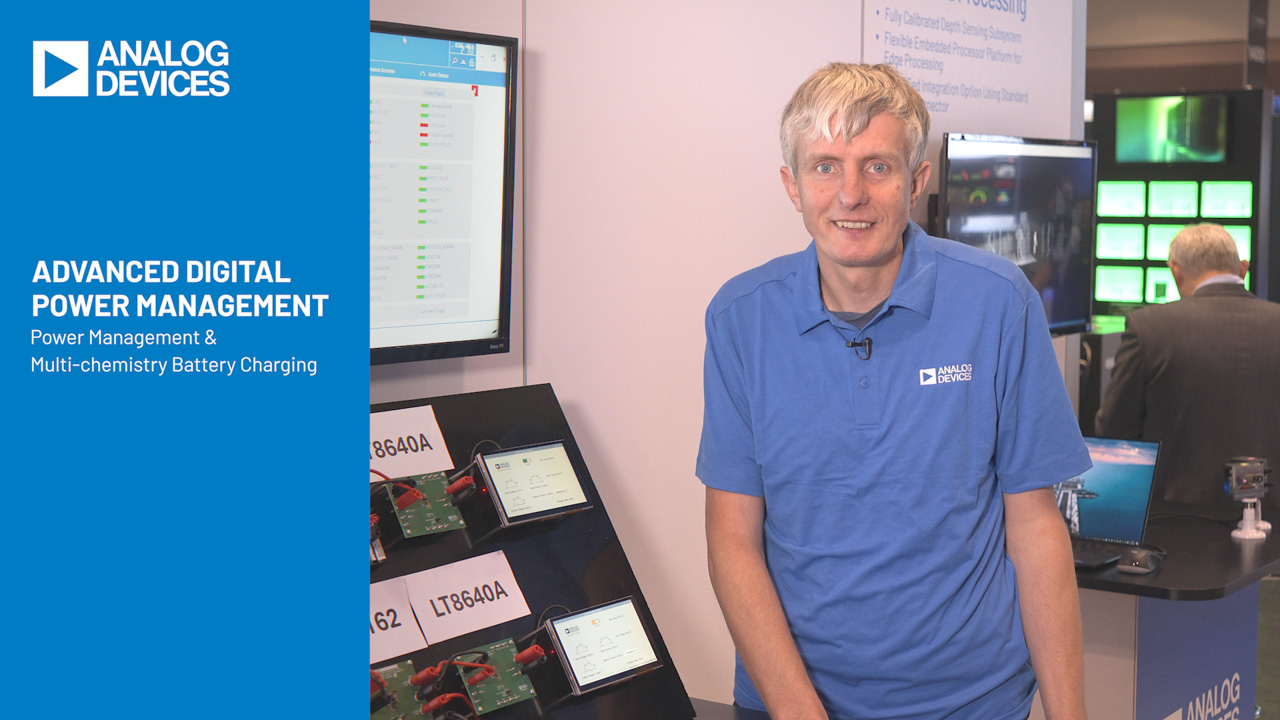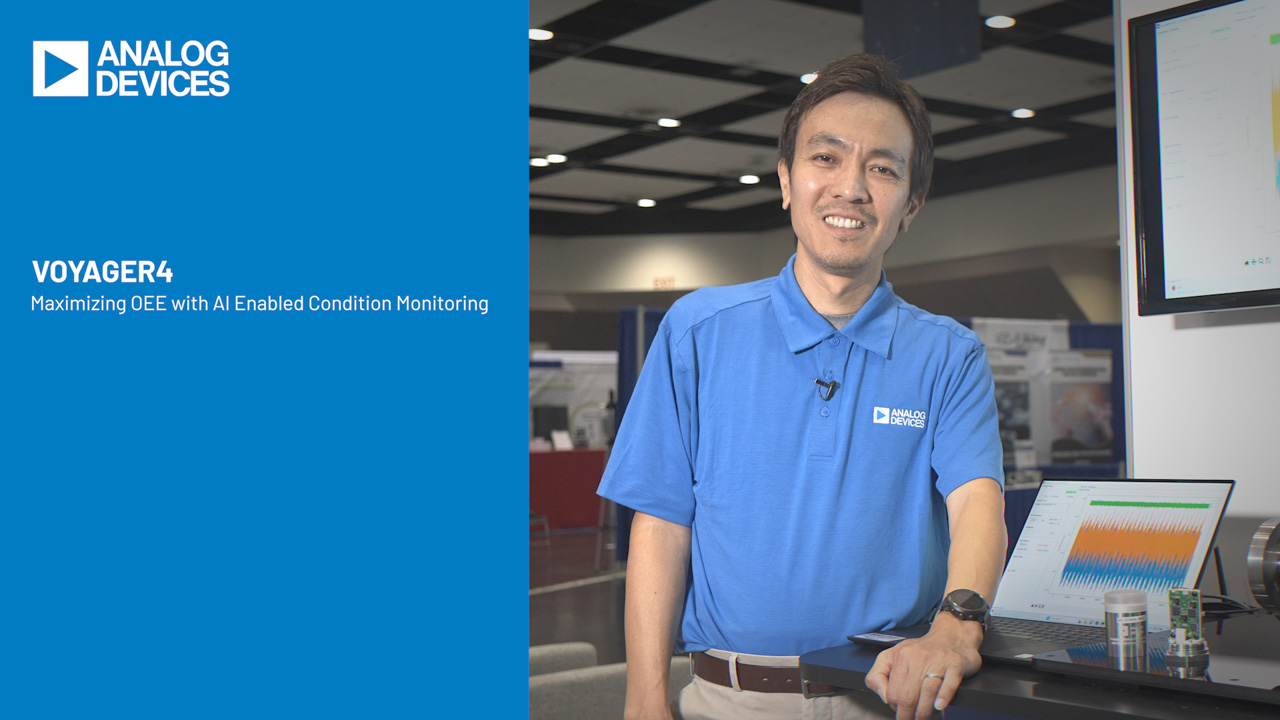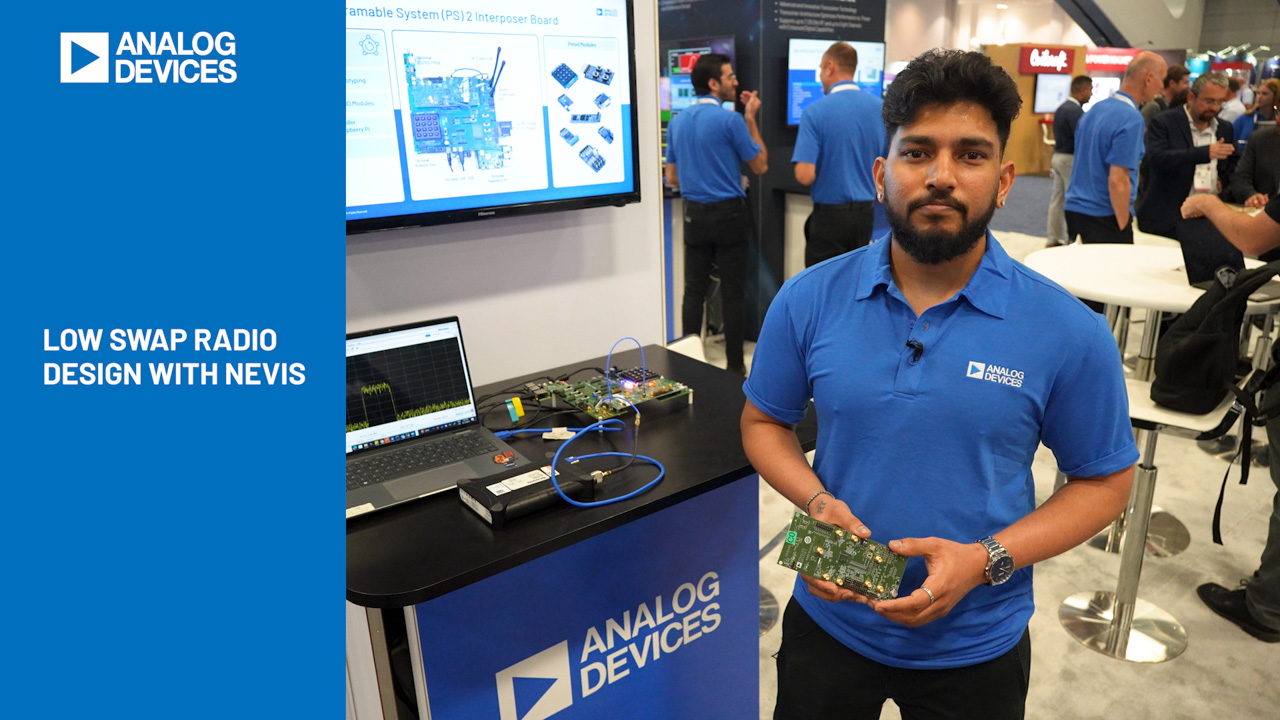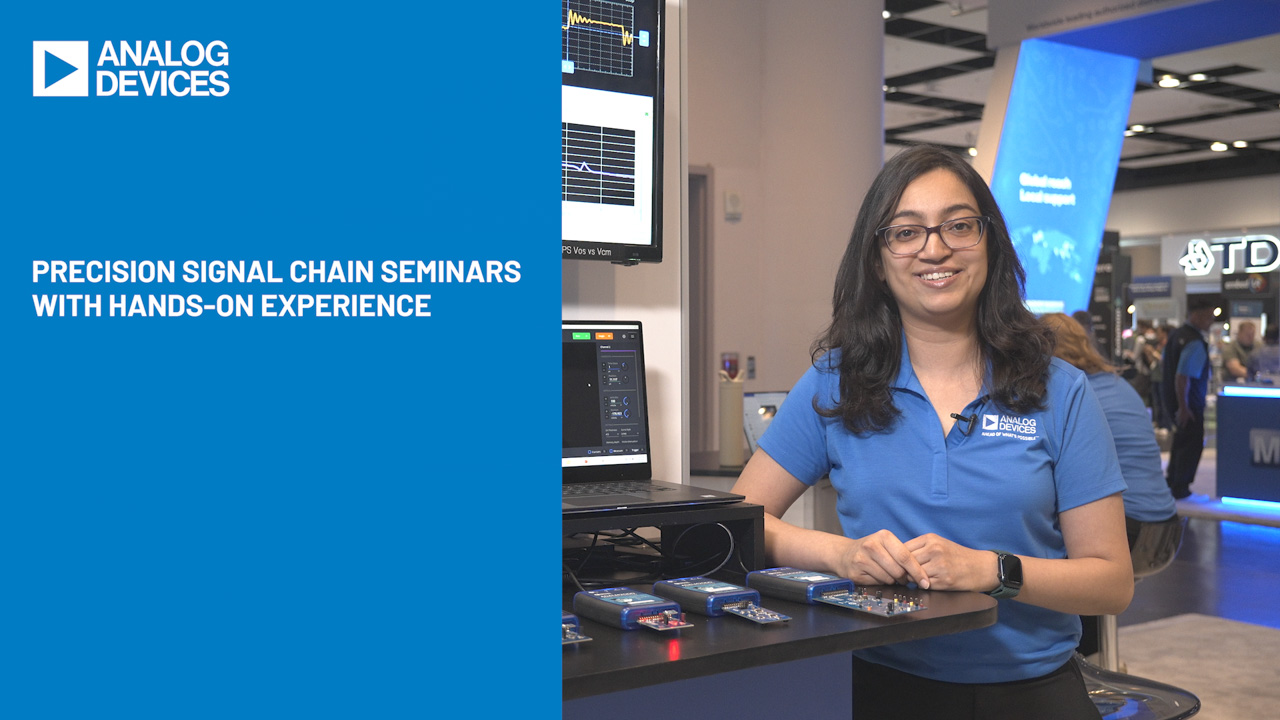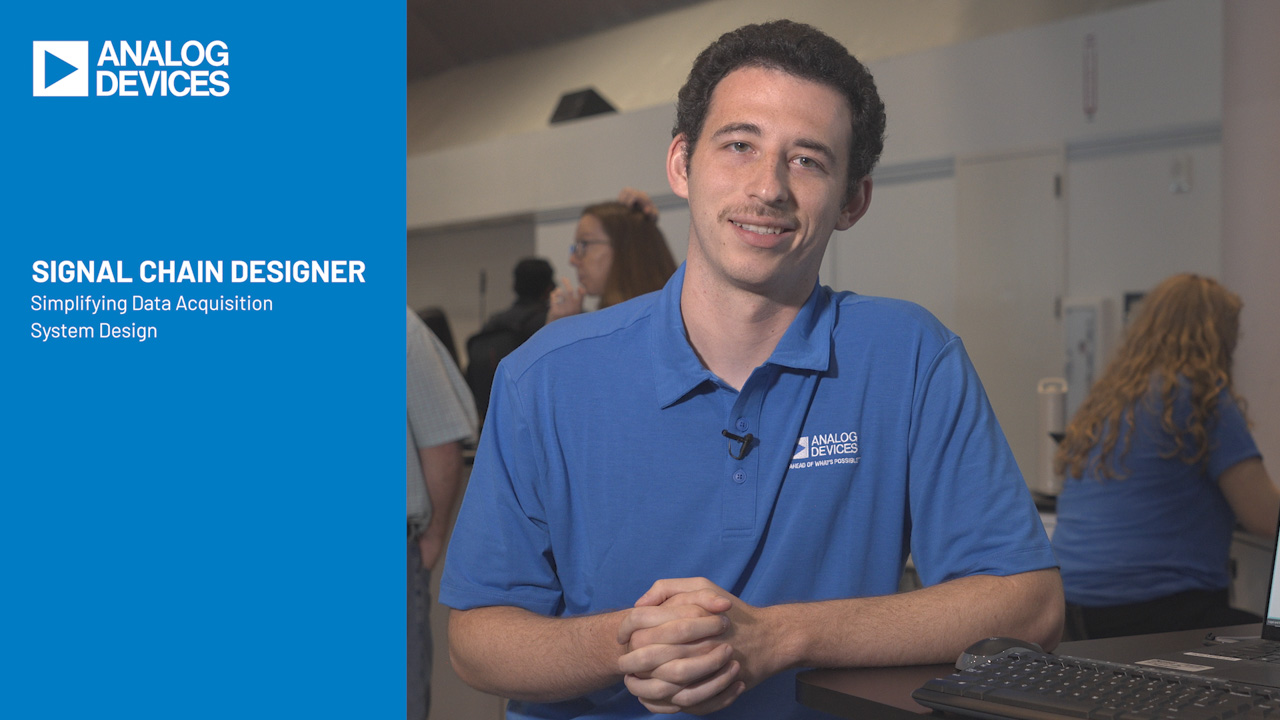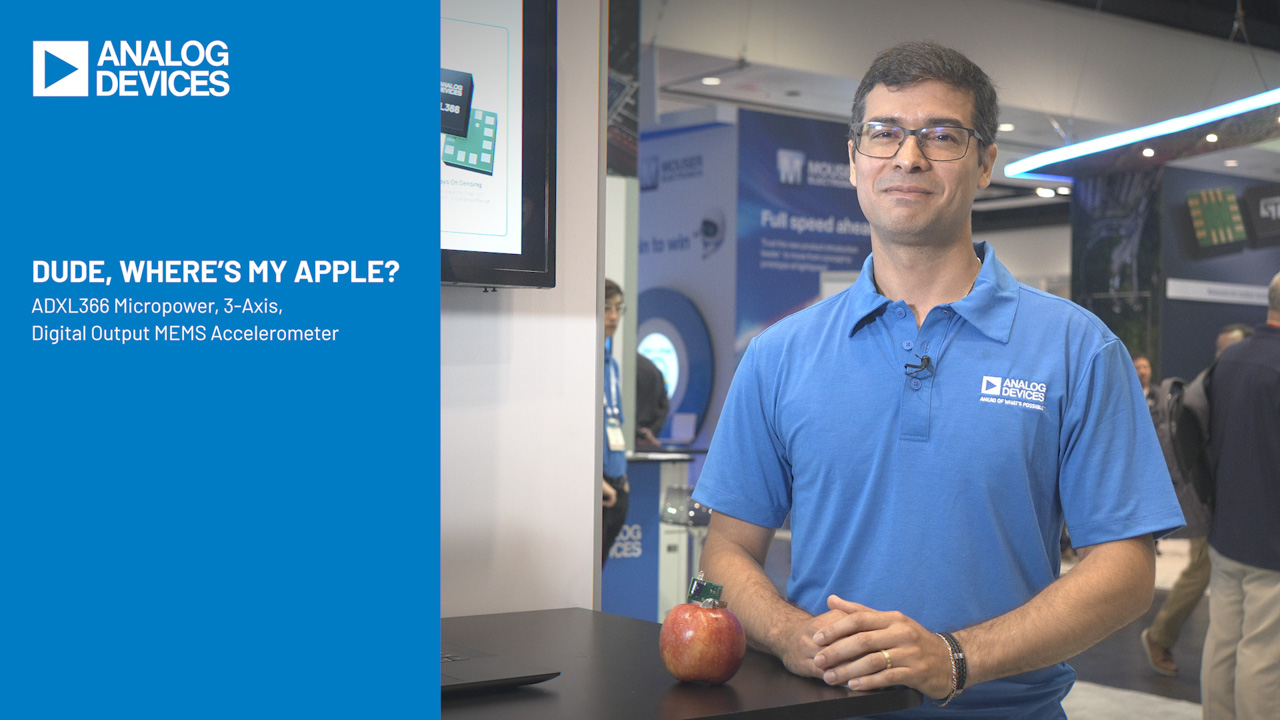Factory of the Future: Designing Edge Sensors with Artificial Intelligence—Part 1
Factory of the Future: Designing Edge Sensors with Artificial Intelligence—Part 1
Feb 17 2025
Read other articles in this series:
Abstract
There are multiple approaches to adding more intelligence to industrial systems, including edge and cloud artificial intelligence (AI) matched to sensors with analog and digital components. With the diversity of AI approaches, the sensor designer needs to consider several competing requirements, including latency for decision-making, network usage, power consumption/battery life, and AI models fit for machines. This article series focuses on the design of an intelligent AI wireless motor monitoring sensor, and answers key questions such as how can edge AI extend the sensor battery life? And what is the improvement in my system insights and decision-making? The sensor presented uses an edge AI algorithm to detect anomalous motor behavior, triggering machine diagnostics and maintenance, and enabling longer motor operating life.
Motor Health Monitoring
Condition-based monitoring (CbM) of robotics and rotating machines, such as turbines, fans, pumps, and motors, records real-time data related to the health and performance of the machine to enable targeted predictive maintenance, as well as optimized control. Targeted predictive maintenance, early in the machine life cycle, reduces the risk of production downtime resulting in increased reliability, significant cost savings, and increased productivity on the factory floor. CbM of industrial machines can utilize a range of sensor data, such as electrical measurements, vibration, temperature, oil quality, acoustic, magnetic, and process measurements such as flow and pressure. However, vibration measurement is the most common by far, as it can provide the most reliable indication of mechanical issues such as imbalance and bearing failure. This article introduces the Voyager4 evaluation kit (EV-CBM-VOYAGER4-1Z), a robust, low power, wireless vibration monitoring platform that enables designers to rapidly deploy a wireless solution to a machine or test setup. The Voyager4 sensor uses an edge artificial intelligence (AI) algorithm to detect anomalous motor behavior, triggering machine diagnostics and maintenance, and enabling longer motor operating life. This is Part 1 of a series of three articles documenting the Voyager4 sensor, which can be used as a template to accelerate design efforts and understand trade-offs in intelligent system design.
- Part 1 of this article series will introduce the Voyager4 wireless condition monitoring sensor, including key elements of sensor architecture, hardware design, power profiling, and mechanical integration.
- Part 2 of this article series will focus on the software architecture and AI algorithm. A complete system-level approach for AI model development and deployment on the Voyager4 is described.
- Part 3 of this article series will look at the practical implementation of the AI algorithm and the different faults Voyager4 can detect such as imbalance, misalignment, and bearing defects.
Wireless Vibration Sensor Typical Operation
Wireless industrial sensors currently available on the market typically operate on very low duty cycles. The user sets the sensor sleep duration, after which the sensor wakes up and measures temperature and vibration, and then sends the data over the radio back to the user’s data aggregator. Commercially available sensors typically quote a 5-year battery life, based on one data capture per 24 hours, or multiple data captures per 24 hours. See Figure 1.
In most cases, sensors operate in sleep mode more than 90% of the time. The Voyager4 sensor will operate in a similar fashion but take advantage of edge AI anomaly detection (using the MAX78000 AI microcontroller) to limit the use of the radio. When the sensor wakes up and measures data, the data is only sent back to the user if the microcontroller detects an anomaly in the data. By using AI at the edge, the battery life can be increased by at least 50% (see the Hardware System and Power Profiling section).
Voyager4 Sensor System Operating Principle
The Voyager4 sensor principle of operation is shown in Figure 2. The ADXL382 triaxial 8 kHz digital micro electronic mechanical systems (MEMS) is used to gather vibration data. First, the raw vibration data follows Path A to the MAX32666 Bluetooth® low energy (BLE) processor. The data can be sent to the user over BLE radio, or via USB. This raw vibration data is used to train an edge AI algorithm using MAX78000 tools.
Using the MAX78000 tools, the AI model is synthesized into C code. The edge AI algorithm is sent in a BLE over-the-air (OTA) update to the Voyager4 sensor and stored in memory using the MAX78000 processor with edge AI hardware accelerator. After this initial Voyager4 training phase, the ADXL382 MEMS data can follow Path B shown in Figure 2. The MAX78000 edge AI algorithm will predict faulty or healthy machine operation based on the vibration data gathered. If the vibration data is healthy, then there is no need to use the MAX32666 radio. The Voyager4 sensor operation can follow Path D shown in Figure 2, where the MEMS returns to sleep mode. However, if faulty vibration data is predicted, then Path C is followed, with a vibration anomaly alert sent to the user over BLE. Part 2 of this article series will explain this edge AI implementation in more detail.
Hardware System and Power Profiling
Figure 3 provides an overview of the Voyager4 hardware system. The ADXL382 is a low noise density, low power, 3-axis MEMS accelerometer with selectable measurement ranges. The device supports ±15 g, ±30 g, and ±60 g ranges and a wide 8 kHz measurement bandwidth. The ADG1634 single-pole double-throw (SPDT) CMOS switch is used to route the MEMS raw vibration data to either the MAX32666 BLE radio or the MAX78000 AI microcontroller. The BLE microcontroller is used to control the SPDT switch. Several other peripherals are wired to the MAX32666, including a MAX17262 fuel gauge used to monitor battery current, and an ultra low power ADXL367 MEMS accelerometer. The ADXL367 is used to wake up the BLE radio from Deep Sleep mode in a high vibration shock event. It consumes only 180 nA of current in motion-activated wake-up mode. The BLE microcontroller can stream the ADXL382 MEMS raw data to the host using either BLE or USB using the FTDI FT234XD-R.
The Voyager4 sensor uses the MAX20335 power management integrated circuit (PMIC), as shown in figures 3 and 4. The PMIC features two ultralow quiescent current buck regulators and three ultralow quiescent current low dropout (LDO) linear regulators. Each LDO and buck regulator output voltage can be individually enabled and disabled, and each output voltage value can be programmed through I2C with the default preconfigured. The BLE processor is used to enable or disable individual PMIC power outputs for different Voyager4 operating modes.
The different Voyager4 sensor operating modes are detailed in Table 1.
| Voyager4 Mode | LDO1 OUT | LDO2 OUT | LDO3 OUT | B1OUT, B2OUT |
| Deep Sleep | 1 | 0 | 0 | 0 |
| Training | 1 | 0 | 1 | 0 |
| Normal/AI | 1 | 0 | 1 | 1 |
| Peripheral | 1 | 1 | 1 | 1 |
| 1 = MAX20335 Output ON, 0 = Output OFF | ||||
Table 2 provides a breakdown of features based on the MAX32666 and MAX78000 active or inactive modes. For example, for training mode, the BLE microcontroller must first advertise its presence in the BLE network and then make a BLE connection with the network manager. The Voyager4 then streams the ADXL382 MEMS raw data over the BLE network for training an AI algorithm on the user’s PC.
| Voyager4 Mode | BLE Advertising | BLE Connection | BLE Data Streaming | AI Inference | Deep Sleep |
| Deep Sleep | 0 | 0 | 0 | 0 | 1 |
| Training | 1 | 1 | 1 | 0 | 1 |
| Normal/AI | 0 | 0 | 0 | 1 | 1 |
| Peripheral | 0 | 0 | 0 | 0 | 1 |
| 1 = Feature is active, 0 = Feature is inactive | |||||
Then the Voyager4 sensor returns to a Deep Sleep mode. In Normal (AI) mode, the BLE radio advertising, connection, and streaming features are disabled by default. At periodic intervals, the MAX78000 wakes up and runs an AI inference. If no anomaly is detected the Voyager4 returns to Deep Sleep mode.
The Voyager4 evaluation kit is characterized for average power consumption based on the time between events for the Deep Sleep, Training, and Normal/AI modes. Figure 5 shows a summary of the average power consumption.
The Voyager4 evaluation kit (EV-CBM-VOYAGER4-1Z) includes several components (LEDs, pull-up resistors) used for customer evaluation convenience. These contribute to the 0.3 mW Deep Sleep current on the LDO1OUT voltage rail, as illustrated in Figure 5.
When the evaluation kit operates in training mode, over 0.65 mW of power is consumed when the BLE is active, advertising, connecting, and transmitting data once per hour. If the Voyager4 sensor operates in AI mode the power consumption is closer to 0.3 mW, even when the sensor is active once per hour. Figure 5 shows that a sensor, which does not have to transmit raw BLE data, can consume up to 50% less power.
At approximately 0.3 mW power consumption, up to two years battery life is possible with one 1500 mAh battery (for example, using TinyCircuits’ rechargeable ASR00073), or over 7 years if using two standard AA size 2.6 Ah LS14500 Saft batteries. Saft’s LS 14500 cell is ideally suited for long-term applications (typically from 5 to 20+ years), featuring low base currents and periodic pulses.
Voyager4 Sensor Mechanical Design
The Voyager4 sensor measures 46 mm in diameter, and 77 mm minimum height, with an M6 threaded hole in the base for a screw stud or adhesive mount to a motor casing. Figure 6 provides an exploded view of the mechanical assembly with an aluminum base and wall housing, and an ABS plastic lid to mitigate against antenna shielding for BLE data transmission. The BLE and edge AI microcontroller PCB is vertically mounted with a battery attached to a standoff. The MEMS sensor and power PCB is placed on the base, close to the monitored vibration source.
Mechanical Modal Analysis
A well-constructed mechanical enclosure design for a MEMS accelerometer will ensure that high quality vibration data for CbM is extracted from the monitored asset. Designing a good mechanical enclosure requires an understanding of modal analysis.
What Is Modal Analysis and Why Is It Important?
Modal analysis is used to understand the vibration characteristics of structures. It provides the natural frequencies and normal modes (relative deformation) of a design. The primary concern in modal analysis is to avoid resonance, where the natural frequencies of a structural design closely match that of the applied vibration load. For vibration sensors, the natural frequencies of the enclosure must be greater than that of the applied vibration load measured by the MEMS sensor. For Voyager4, the 3 dB bandwidth across the X, Y, and Z axes is 8 kHz. The sensor enclosures should not have any significant resonances at less than 8 kHz.
Natural Frequency and Mode Shape
ANSYS and other simulation tools provide modal analysis plugins, which enable the designer to explore the effect of geometry, material selection, and mechanical assembly on the frequency response of the sensor enclosure. The sensor enclosure mass, stiffness, and natural frequencies are interrelated.
The mass matrix [M], stiffness matrix [K], angular frequency ωi, and mode shape {∅i} are related by Equation 1 used in FEM programs like ANSYS. The natural frequency fi is calculated by dividing ωi by 2π, and the mode shape {∅i} provides the relative deformation patterns of the material at specific natural frequencies.

For a single degree of freedom system, the frequency is simply expressed by Equation 2.

Equation 2 provides a simple intuitive way to evaluate a design. As you reduce the height of the sensor enclosure, the stiffness increases and the mass decreases, therefore the natural frequency increases. Also, as you increase the height of the enclosure, the stiffness reduces and the mass increases, resulting in a lower natural frequency. Most designs have multiple degrees of freedom. Some designs have hundreds. Using the finite element method provides quick calculations for Equation 2, which would be very time-consuming to do by hand.
Using simulation tools and equations 1 and 2, along with careful material selection ensures that the design meets frequency response targets. The article “How to Design a Good Vibration Sensor Enclosure Using Modal Analysis” provides a complete overview of modal analysis for further reading.
Mode Participation Factor
The mode participation factor (MPF) is used to determine which modes and natural frequencies are the most important for your design. The mode shape {∅i}, mass matrix [M], and excitation direction vector D are related by Equation 3 MPF. The square of the participation factor is the effective mass.

The MPF and effective mass measure the amount of mass moving in each direction for each mode. A high value in a direction means the mode will be excited by forces, such as vibration, in that direction.
To complete the interpretation of modal analysis, it’s important to understand that all points on a structure vibrate at the same frequency (global variable), but the amplitude of vibration (or mode shape) at each point is different. For example, an 18 kHz frequency can affect the top of the mechanical enclosure more than the bottom.
Voyager4 Modal Simulation and Lab Test
The Voyager4 sensor assembly was simulated using 3003 aluminium alloy for the enclosure bottom, mid-section, and ABS-PC plastic for the lid.
The modal analysis simulation results are shown in Table 3, with a total of 14 mode results captured in the frequency of interest. The MPFs in the X, Y, and Z directions are tabulated. The strongest modes are highlighted in blue. The simulation results are used to examine the deformation locations for these relatively strong modes.
| Mode No. | Freq (Hertz) | X Direction | Y Direction | Z Direction |
| 1 | 3546.60 | 0.19095 | 2.67E-05 | 0.003805 |
| 2 | 3550.40 | 0.0036033 | 3.34E-05 | 0.19221 |
| 3 | 3895.80 | 1.09E-05 | 0.043253 | 3.70E-05 |
| 4 | 5486.10 | 0.00030529 | 3.70E-07 | 5.50E-05 |
| 5 | 5509.80 | 9.22E-05 | 3.56E-06 | 0.00033943 |
| 6 | 7183.10 | 0.019295 | 6.04E-07 | 0.022231 |
| 7 | 7247.70 | 0.058405 | 0.00011845 | 0.11528 |
| 8 | 7299.80 | 0.084243 | 3.27E-07 | 0.034089 |
| 9 | 7936.30 | 0.064918 | 1.70E-05 | 0.02292 |
| 10 | 7950.10 | 0.03031 | 3.29E-06 | 0.06365 |
| 11 | 10344 | 2.07E-05 | 4.03E-05 | 1.42E-05 |
| 12 | 10423 | 9.02E-06 | 0.00037979 | 1.69E-05 |
| 13 | 10973 | 3.00E-06 | 6.27E-06 | 3.14E-06 |
| 14 | 11033 | 1.66E-08 | 0.0014244 | 1.89E-07 |
Modes 1 and 2 are similar and affect the ABS-PC lid as shown in Figure 7.
Based on the location of Mode 1, far away from the sensor PCB located at the base, it is predicted that this small resonance should not affect the ADXL382 MEMS performance.
Mode 7 is also highlighted in Table 3. This occurs at approximately 7.25 kHz on the Z (vertical) axis. Figure 8 shows some appreciable effects on the vertical wall of the enclosure. However, the base is not strongly affected by Mode 7.
This modal simulation shows that there are no modes that will have an appreciable effect on the ADXL382 sensor PCB located on the enclosure base, and the 3 dB, 8 kHz bandwidth of interest should not have significant mechanical resonances.
To validate the simulation results, the Voyager4 sensor was placed on a modal shaker, with a constant 0.25 peak (g) input vibration, and frequency sweep from 0 kHz to 8 kHz. The frequency response of the Voyager4 sensors is within ±1.5 dB up to 8 kHz as shown in Figure 9.
Conclusion
Microcontrollers with embedded AI hardware accelerators provide a path to better decision-making and longer battery life for wireless sensor nodes. By using AI at the edge, the battery life can be increased by at least 50%. Modal analysis for vibration sensor enclosures accelerates the sensor development cycle and ensures good quality vibration data captured from monitored assets.
About the Authors
Richard Anslow is a senior manager, working in the field of software systems design engineering within the Industrial Automation Business Unit at Analog Devices. His areas of expertise are condition-based monitoring, motor...
Danail Baylov is a staff system engineer in the Industrial Automation Business Unit at Analog Devices Limerick working on systems design and implementation, and software development. He received B.Eng. and M.Eng. degrees f...
Related to this Article
Products
PRODUCTION
Artificial Intelligence Microcontroller with Ultra-Low-Power Convolutional Neural Network Accelerator
PRODUCTION
Low-Power ARM Cortex-M4 with FPU-Based Microcontroller with Bluetooth 5 for Wearables
RECOMMENDED FOR NEW DESIGNS
Low Noise, Low Power, Wide Bandwidth, 3-Axis MEMS Accelerometer
Wireless Asset Health Monitoring with Edge AI
4.5 Ω RON, Quad SPDT ±5 V, +12 V, +5 V, and +3.3 V Switch
Nanopower, 3-Axis, ±2 g/±4 g/±8 g Digital Output MEMS Accelero...
5.2µA 1-Cell Fuel Gauge with ModelGauge m5 EZ and Internal Current Sensing
PMIC with Ultra-Low IQ Voltage Regulators and Battery Chargers for Small Lithium Ion Systems












